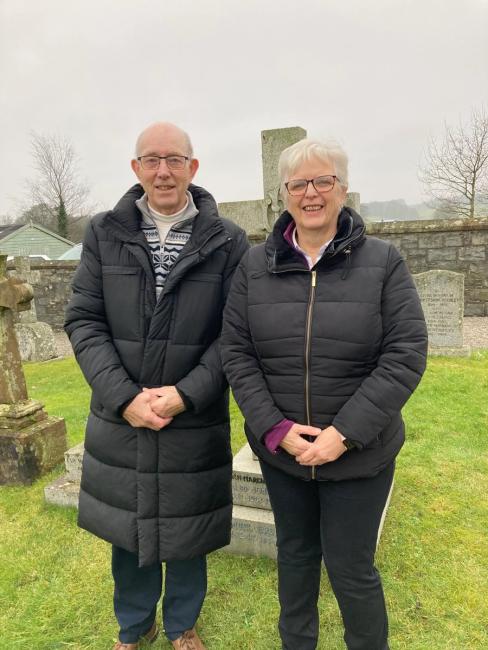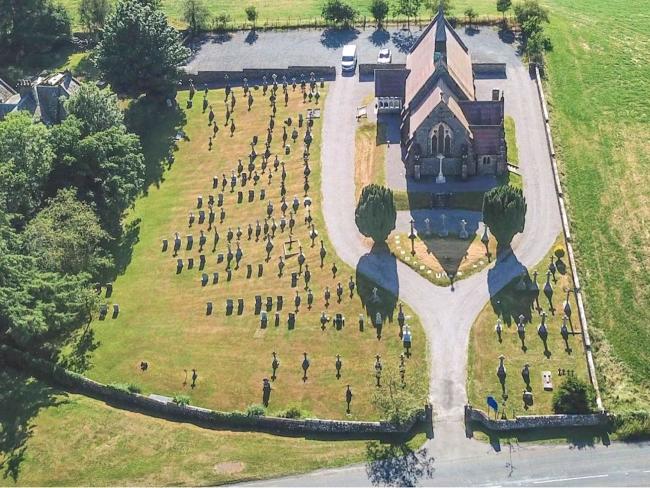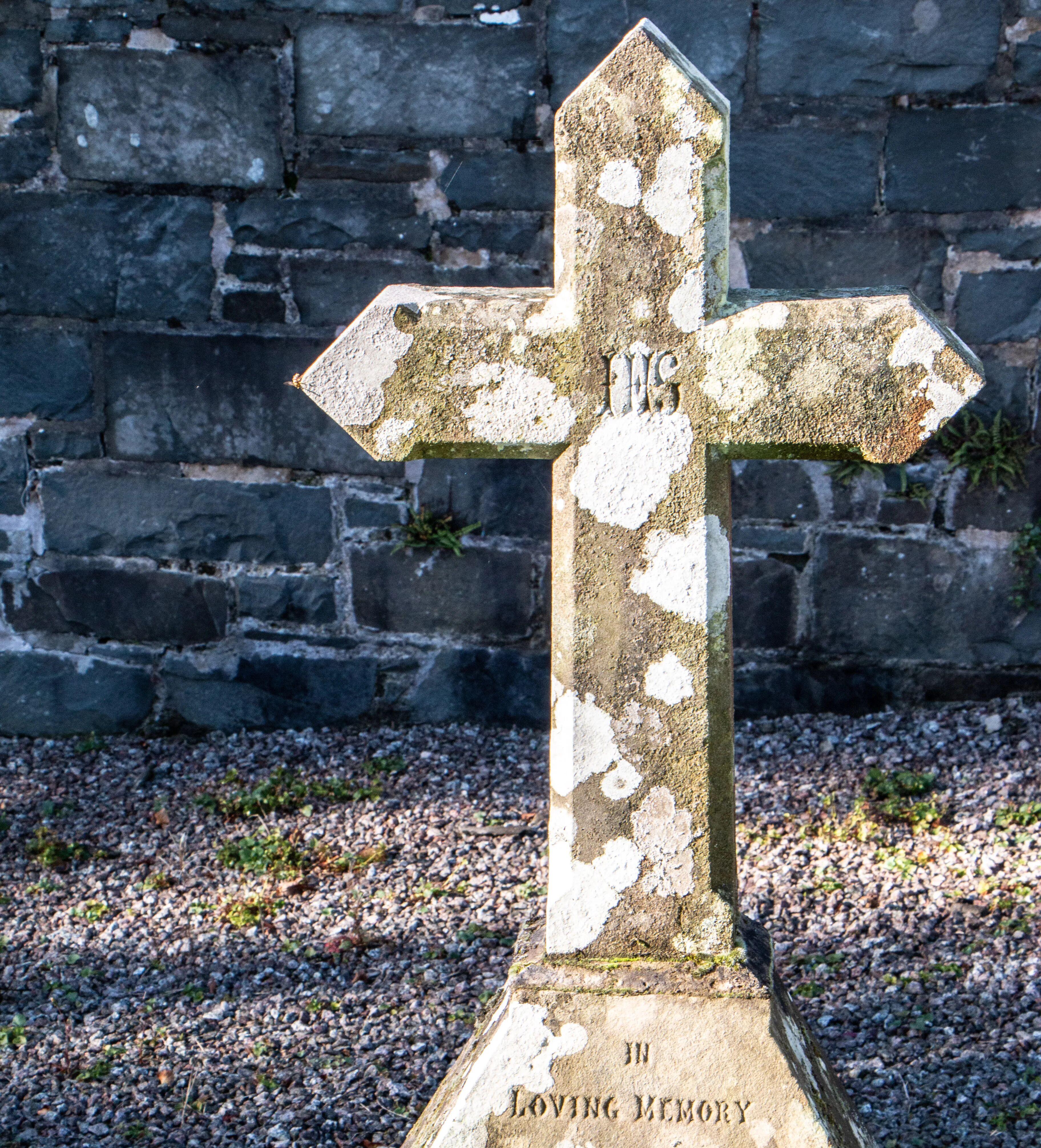Churches are often physical archives of local history, preserving the memory of significant figures and events through stained glass, memorial plaques, and of course gravestones. Challoch All Saints, a remote building in Dumfries and Galloway, is one such church. However, a radical graveyard clean-up project has helped the church to create accurate records and make new discoveries.
The project, led by volunteers Keith Best and Kathryn Ambler, has involved extensive work in cleaning gravestones that had become hard to read, as well as making their records more accessible. Hear from the team at Challoch about how they uncovered hidden histories and what they hope it will mean for the future.
Beginnings
“Challoch has many war heroes buried here, members of the Earls of Galloway family, and also local people, all with their stories to tell,” explains Revd. Dawn Matthew, Priest-in-Charge at All Saints Church.
“We found that we had a lot of people that would come in and say ‘I’m trying to find my auntie Violet’. But it’s quite difficult to help people without good, clear records.”
To better understand their history, the church embarked on an ambitious project to clean the gravestones and record the information on them.
“The project started in 2023, when we did Doors Open Day. The theme was heritage. And of course, we have wonderful heritage here,” continues Dawn.
“So, we looked at how we could present our heritage inside the church. And then also asked ourselves what we could do outside the church, because with the graves going back to the 1870s, [we felt there was] a lot that we could offer.”
“A chap from the War Memorials Trust came along. He was very experienced in cleaning graves...as part of the day, [he] showed us how best to clean graves. It was loads simpler than we all thought.”
With the ambition already in place, learning how to clean the gravestones gave the church a way forward with the project.
Volunteers are essential
Led by Keith and Kathryn, the team carried out the grave cleaning work over a number of months.
“[You use] a hard brush, a soft brush and a bucket of water. And it is quite simply spraying small area, brushing hard brush, soft brush, gradually just lifting, you know, the blooms of lichen and age that are there. Obviously, you’re dipping the brushes in the water and you have to go gently and carefully,” explains Dawn.
Cleaning historic stonework is a complex issue that involves both aesthetic and technical considerations. It is important to seek the advice of a qualified conservator or other conservation specialist before carrying out work like this. If a memorial or gravestone is listed, you should also seek Listed Building Consent.
Like a lot of church projects, volunteers were absolutely key to the success of the project at Challoch.
“It’s a really time-consuming task. Relatively speaking, our churchyard is quite small. But it took so much time to do,” says Dawn.

“Keith particularly has spent [a lot of time]. It’s been a huge commitment,” said Dawn “...to do it, you’ve got to have somebody who loves that kind of history.”
“I think when we started, we didn’t know it was going to be as big a job as it was. Engage with people, but make sure you’re doing what works for you.”
Doing what works for your church will depend on the type of project you’re doing, but also on the skills and resources at your disposal. Volunteers can be key in any local history project. They will have the skills to tackle many of tasks that need doing, but it’s really important not to underestimate how much work is involved.
What’s more, being flexible and making use of the skills that your volunteers already have can also open up unexpected opportunities.
“The son of somebody in the church had a drone and works for a drone company that maps churchyards out. So, we did have a drone go over, because there are quite a few headstones. The drone can give good information as to how the soil has sunk and the density of it with the monitoring equipment,” shared Dawn.
Fortunately, after much hard work, the gravestones at Challoch were clean, and the inscriptions could be read once again. This led to the next phase of the project, which involved creating a comprehensive record of them, cross referenced against older, less complete records.

Sharing your discoveries
Throughout the project, the team uncovered previously hidden details of past local residents.
One such discovery was made next to a memorial stone, dedicated to ‘Mary Jane McLelland – beloved wife of William Charles Locke, died 1913’. This was partially covered, but when the volunteers started clearing the undergrowth, they uncovered another headstone, which had been totally obscured over time, dedicated to ‘William Locke, died 1962’.
“This is just one of many fascinating stories that our work has revealed. The William Locke memorial stone beside Mary Jane’s is presumably dedicated to her son,” explains Keith.
With fascinating discoveries and having created the new record, the church has turned its attention to sharing the stories with the congregation, visitors and the wider public.
Once again, they were able to utilise the skills of a volunteer, whose background in communications helped to get the story into the press.
The project has only recently been completed, so the real impact is still unknown. But the church is optimistic about the future.
“I hope that it will bring more people to the church. It will provide stronger links between us and the community,” shares Dawn.
"People think of churches as a history that's been forgotten. But it’s still a living history for people today.”
The team hope to eventually publish the records online, enabling people to explore the gravestones from anywhere in the world. But for the moment, they have been able to welcome visitors to learn about local or family history through the records.
“One of the best things we’ve found was opening the church up on a Saturday, particularly during the summer. We’re in the middle of nowhere, but it’s very beautiful. People do drive by, but actually some of the visitors had come to see, you know, grandad’s grave,” explains Dawn. “You get good public engagement by having a church open”.
With a complete record, new discoveries and an open door, the church is now well-placed to welcome visitors interested in learning about the history of the local area or specific individuals.
The experience of the team at Challoch shows how a church can make great use of the history embedded in its stone.
Every church has a story to tell, and by looking at the local history links inside or outside your building, you can engage visitors and the community more.
For churches: top tips for your place of worship
- Recruit committed volunteers. Volunteers are the backbone of so much of the great work that churches do and can help with all manner of tasks. By recruiting people who are willing to commit their time, you’ll be setting yourself up for success. Find out how to recruit volunteers.
- Make use of your volunteers’ skills. Being thoughtful about how your volunteers can help will open up opportunities during projects. The experiences and transferrable skills that people have can be really helpful, so don’t be shy of asking for help or ideas.
- Open your church building to visitors. Your church has a story to tell, and by opening the door you can create a warmer welcome for visitors. Read more about how to welcome visitors to your church.

